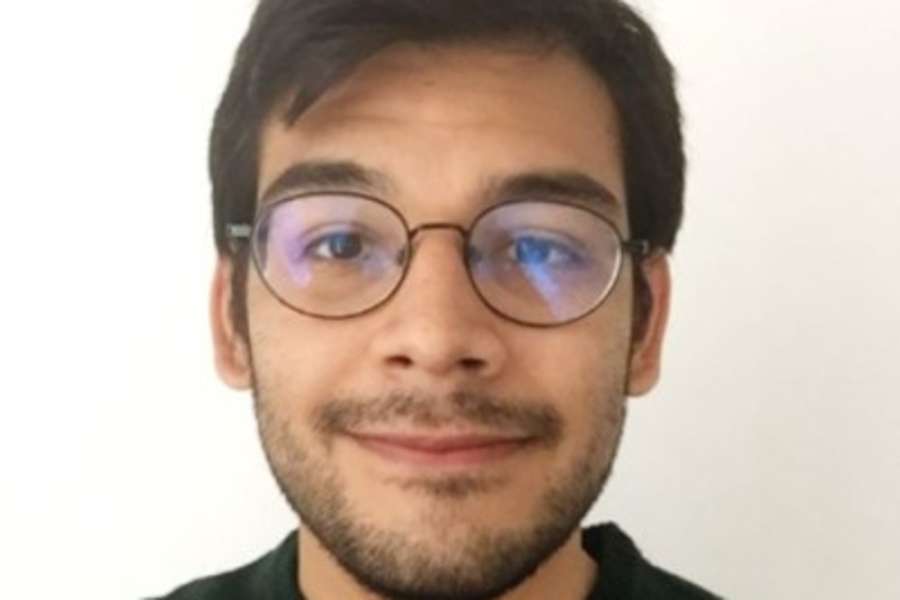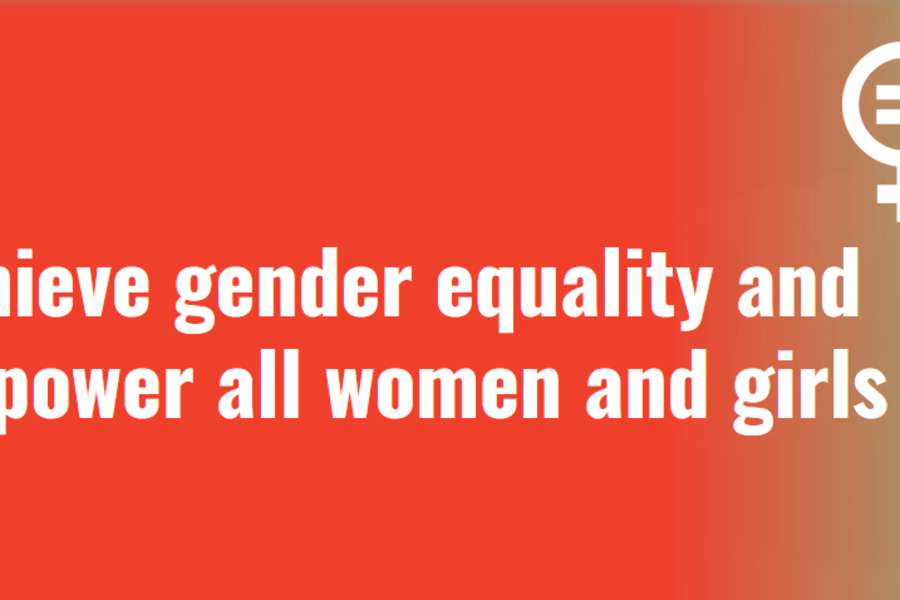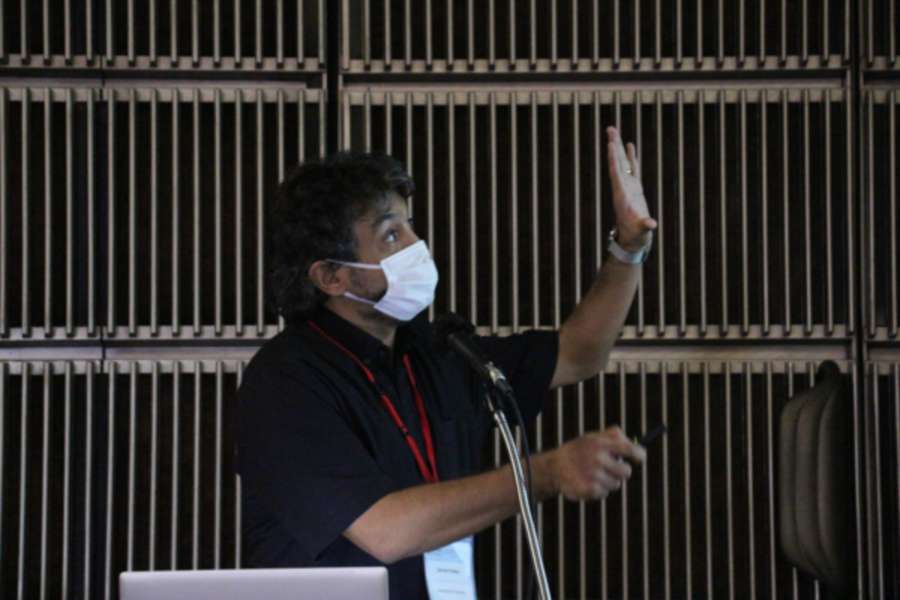
Advances in Reusable Mask Patterning
Napoli, 9/09/2025
Diego Colombara illustrates REMAP’s breakthrough innovation during the 50th Congress of the Inorganic Chemistry Division of Società Chimica Italiana held in Naples.

Napoli, 9/09/2025
Diego Colombara illustrates REMAP’s breakthrough innovation during the 50th Congress of the Inorganic Chemistry Division of Società Chimica Italiana held in Naples.

Montreal, 21/05/2025
Diego Colombara illustrates REMAP’s breakthrough innovation as part of the invited lecture at the 49th International Conference and Exposition
on Advanced Ceramics and Composites in Daytona on the 29th of January 2025.

Montreal, 20/05/2025
Maria Gonzalez Juarez illustrates REMAP’s advances towards the demonstration of renewable mask patterning
Montreal, 19/05/2025
Diego Colombara illustrates insights on the role of extrinsic dopants in CIGS as part of the invited lecture at the 147th Meeting of the Electrochemical Society in Montreal on the 19th of May 2025.

Daytona, 29/01/2025
Diego Colombara illustrates REMAP’s breakthrough innovation as part of the invited lecture at the 49th International Conference and Exposition
on Advanced Ceramics and Composites in Daytona on the 29th of January 2025.

Daytona, 29/01/2025

Daytona, 28/01/2025

Daytona, 28/01/2025

Daytona, 28/01/2025

Daytona, 28/01/2025

Daytona, 28/01/2025
Diego Colombara illustrates REMAP’s insights on the role of extrinsic dopants in CIGS as part of the invited lecture at the 49th International Conference and Exposition
on Advanced Ceramics and Composites in Daytona on the 28th of January 2025.

Montpellier, 17/09/2024
In the framework of WP2, Cláudia Coelho illustrates the fabrication process and the first characterization results of REMAP’s current line setup designed to manipulate magnetorheological electrolytes at the microscale.

Warsaw, 16/09/2024
In the framework of WP3, Maria De Lourdes Gozalez Juarez explains the need of adapting growth conditions when fabricating on the micro-scale to achieve operating CIGSe micro-solar cells at the e-MRS. The design of the pattern and the SiO2 matrix play important roles in the synthesis process of micro-concentrators. For instance, the height of the SiO2 matrix helps shaping the CIGSe absorber, whereas the diameter of the micro-dots has an influence in the formation mechanism. On the other hand, the Se partial pressure and the annealing temperature have paramount influence in determining the morphology and optoelectronic performance of the CIGSe based micro solar cells.

Milano, 12/09/2024
Phillip Dale explained the concept of light concentration for photovoltaics, and how this reduces the use of precious semiconductor materials, the chosen application to demonstrate the REMAP technology.

Milano, 7/09/2024
In the framework of WP1, Alexander Omelyanchik gives a talk at the 8th Italian Conference on Magnetism (MAGNET2024).

Milano, 29/08/2024
Diego Colombara illustrates REMAP’s breakthrough innovation as part of the Raffaello Nasini award lecture at the 28th National Congress of Società Chimica Italiana in Milan on the 29th of August 2024.

Bayonne, 29/08/2024
In the framework of WP4, Rita Bencivenga is hosted as a Keynote speaker and panelist at the “Diversity, Equity and Inclusion” symposium of the 28th ADBIS (advances in databases and information systems) conference. Her talk deals with incorporating Gender+ and intersectionality in research, whereas the panel she takes part of is entitled “More Than Muscles in the Lab: Expanding Masculinities in a Competitive Research Culture”.

Milano, 26/08/2024
In the framework of WP1, Michael Casale gives a talk at the 27th National Congress of Società Chimica Italiana.

Dong Hoi City, 5/08/2024
In the framework of WP1, Sawssen Slimani gives an invited talk at the International Symposium on Advanced Magnetic Materials and Applications in Vietnam, along with Marianna Vasilakaki from NCSRD.

Iglesias, 28/07/2024
Diego Colombara illustrates the aim of e-APP’s (empowering advanced photovoltaic pioneers) workshop: leveraging the intellectual property being generated in REMAP (EIC Pathfinder Open), TRANSMIT (Clean Energy Transition Partnership) and e-APP (Italian Ministry of Foreign Affairs) to push PV innovation in industry.

Iglesias, 28/07/2024
Maria Gonzalez-Juarez provides an overview of REMAP’s advances in WP3 at the first workshop of e-APP, a bilateral project between the University of Genova and Drexel University.

Iglesias, 28/07/2024
Sawssen Slimani provides an overview of REMAP’s advances in WP1 at the first workshop of e-APP, a bilateral project between the University of Genova and Drexel University.

Iglesias, 27/07/2024
In the framework of WPs 1&2, Popi Trohidou gave an overview on the study of the response of high-moment magnetic nanoparticles (MNPs) based ferrofluids in a magnetic field. The work illustrated the optimum conditions for MNPs cluster formation in the ferrofluid. The conditions of cluster dissociation process, suggesting a green surface patterning method in lithography by creating reusable masks, were also studied and the importance of the organic coating has been demonstrated.

Online event, 23/07/2024
As part of WP4, Rita Bencivenga took part to the “Diversity Equity and Inclusion in research: a COST Action workshop for strategies in STEM disciplines” to discuss how REMAP and other EU projects are implementing strategies to enhance equality, dversity, and inclusion in research and teaching.

Barcelona, 10/07/2024
In the framework of WP1, Nikolaos Ntallis analyses via DFT calculations the magnetic behaviour of high moment nanoparticles and more specifically composite Co core /Fe shell and Fe1-xCox alloy nanoparticles as a function of their composition and size. Also, the effect of organic coating is studied.

Gijón, 8/07/2024
In the framework of WP1, Sawssen Slimani gives a talk at the 24th IEEE International Conference on Nanotechnology in Gijón (Spain) providing insights from Monte Carlo simulations and spark plasma sintering, along with Marianna Vasilakaki from NCSRD.

Thessaloniki, 3/07/2024
In the framework of WP2, Nikolaos Ntallis takes part to the 21st International Conference on Nanosciences &
Nanotechnologies (NN24) describing an optimized controller composed by current lines that can effectively drive magnetic elements to create masks. Through modelling, the controller can be described in a parametric form and thus tuning on demand can be achieved for different applications.

Roma, 24/06/2024
In this WP1 contribution at the Symposium for Young Chemists in Rome, Michael Casale illustrates the titration of Fe(II)/Fe(III) solutions with sodium hydroxide to explore the formation mechanism of magnetite nanoparticles in the presence of L-glutamic acid. X-Ray Diffraction and Transmission Electron Microscopy provide the morpho-structural features of the MNPs. The molecular coating on the surface of MNPs is investigated by coupling thermogravimetric analysis to Fourier-transform infra-red spectroscopy. The magnetic properties (i.e. field and temperature dependent magnetization) and Hyperfine structure of MNPs will later be investigated by VSM magnetometry and Mössbauer spectroscopy, respectively.

Roma, 24/06/2024
In the framework of WP1, Jean Pierre Miranda Murillo presented a poster at the Symposium for Young Chemists in Rome, reporting a study on the structural and magnetic properties of Fe-SiO2 nanocomposite obtained by self-combustion sol-gel and hydrogen gas. This study provides the basis to obtain REMAP’s ferrrofluids, upon coating of the nanostructures.

Torino, 5/04/2024
In the framework of WP1, Andrea Messina showcases the efforts undertaken to functionalize the surface of magnetic nanoparticles constituting the magnetorheological electrolytes, by means of click-chemistry and making use of organic moieties synthesized ad-hoc. The event took place at the 11th “Italian-French chemistry days” in Turin.

Torino, 4/04/2024
In the framework of WP1, Davide Carrea presents a study on Cu plating galvanic bath and deposition mechanism

Brixen, 15/01/2024
As part of WP1, Michael Casale describes how the formulation of REMAP’s magneto-responsive fluids requires the attentive choice of capping ligands such that the response is appropriately tuned, while preventing aggregation and settling. He also investigates the use of bio-available molecules to cover the surface of the nanoparticles for better functionality and sustainability. In this contribution, iron oxide nanoparticles with spinel structure were coated with different bio-available molecules. A physico-chemical characterization was performed to assess the formation of covalent bonds.

Paris, 13/12/2023
Diego Colombara is invited to the École nationale supérieure de Chimie in Paris to showcase REMAP’s innovation on Cu(In,Ga)Se2 microconcentrator solar cells, as well as fundamental aspects related to extrinsic doping with alkali metal ions.

Lisbon, 21/09/2023
At EUPVSEC 2023, we presented our study onZn1-xSnxOy (ZTO) thin films as Cd-free buffer layers for Cu(In,Ga)Se2 solar cells. Using chemical bath deposition (CBD), a scalable and cost-effective method, we achieved a maximum efficiency of 11% with ZTO on industry-grade CIGSe absorbers. This performance matches that of traditional CdS buffers. Our findings highlight the potential of ZTO as an environmentally friendly alternative, advancing sustainable photovoltaic technology.

Thessaloniki, 20/09/2023
In the framework of WP2, Nikolaos Ntallis analyses how a magnetic controller, composed by arrays of current lines, can be used to drive magnetic elements to create masks for surface patterning. Through modelling, the field response of the magnetic elements is studied.

Thessaloniki, 19/09/2023
In the framework of WP1, Popi Trohidou gave an overview of the recent studies on the modification of the magnetic properties of the nanoparticles and frozen ferrofluids (FFF) as the percentage of the oleic acid (OA) coverage of a Co ferrite nanoparticle increases, using a multi-scale modeling approach. This systematic study provides a thorough understanding of the underling mechanism of the coating-nanoparticle interaction and its effect on the macroscopic behaviour of the FFF. It demonstrates that the coating affects both the intra-particle characteristics and the inter-particle interactions offering the possibility to control the nanoparticles’ properties.

Thessaloniki, 18/09/2023
In the framework of WP1&2, Marianna Vasilakaki has presented results on the study of high-moment based ferrofluids and their response in a magnetic field in order to investigate the optimum conditions of cluster aggregation and the colloidal stability of these ferrofluids at certain external conditions, i.e., magnetic applied field at different temperatures.

Torino, 5/09/2023
In the framework of WP1, Jean Pierre Miranda Murillo gave an oral presentation on Fe3O4/Fe2O3 nanostructured powder obtained by self-combustion sol-gel in inert atmosphere. These phases are tested in the MRE formulations.

Torino, 4/09/2023
In the framework of WP1, Jean Pierre Miranda Murillo presented a poster at the Italian National Congress of Physical Chemistry, reporting an initial investigation on the synthesis of Fe67Co33 ferrofluids in hydrogen gas by the thermal decomposition method.

Torino, 4/09/2023
In the framework of WP1, Alexander Omelyanchik presents a poster at the 49th Congress of Physical Chemistry in Turin.

Athens, 11/07/2023
In the framework of WP1, Marianna Vasilakaki from NCSRD has presented recent results on the magnetic behaviour of novel nano-architectures of multi-shell magnetic nanoparticles which can the enhance the magnetic properties for high-performance technological and biomedical applications.

Samarkanda, 2/07/2023
In the framework of WP1, Davide Peddis gives an invited talk at the Samarkand International Symposium on Magnetism.

Gargnano, 20/06/2023
In the framework of WP1, Andrea Messina ilustrates with a poster the syntheitic pathways to funcionalize REMAP’s MREs at the “Attilio Corbella” International Summer School on Organic Synthesis (ISOS) in Gargnano

Verbania, 19/06/2023
In the framework of WP1, Jean Pierre Miranda Murillo presented a poster at the Italian School of Physical Chemistry, reporting an initial study on the formation pathway of FeCoO/FeCo nanocomposite in hydrogen gas by the thermal decomposition method.

Porto, 15/06/2023
In our study, presented at the Doctoral Congress in Engineering, we explored non-toxic zinc tin oxide (Zn1-xSnxOyor ZTO) thin films as buffer layers for Cu(In,Ga)Se2 solar cells, traditionally using toxic CdS layers. Using chemical bath deposition, we synthesized ZTO films with a tunable wide band gap, achieving efficiencies averaging 11 ± 2%. This work demonstrates ZTO as a viable, environmentally friendly alternative to CdS in solar cells, contributing to the advancement of sustainable energy technology.

Granada, 15/06/2023
Pavel Kuzhir gave a keynote lecture at the 16th International Conference on Magnetic Fluids (ICMF) in Granada. This is a flagship conference on the topic, which has been regularly organized every three years since 1977. On the 15th of June, Pavel presented results from REMAP’s WP1 in front of researchers involved in the science of magnetic fluid, at large, from liquid dispersions to more complex systems such as magnetorheological fluids, magnetic gels, biocolloidal systems, etc.

Valencia, 8/03/2023
This presentation reveals new evidence that addresses fundamental questions about CIGS technology. REMAP’s innovation on microconcentrator solar cells is then illustrated, aiming to reduce critical raw materials and enable efficient CIGS panels.

Online event, 11/02/2023
This webinar has been organised by Ulysseus European University to celebrate the 2023 International Day of Women and Girls in Science.

University of Genova, 18/11/2022
This intervention contributes to the debate on sex, gender and intersectional analysis showing REMAP’s ambition to demonstrate the pervasive added value of gender in a typically perceived “a-gendered” scientific arena.

Roma, 22/09/2022
In the framework of WP4, Rita Bencivenga illustrates the micro-actions initiated by REMAP to promote a gender+ perspective to a conventionally agendered project throughout the project’s duration.

Roma, 22/09/2022
In the framework of WP1, Nikolaos Ntallis has presented a study on ferrite nanoparticles covered with organic surfactants and showed the change of the magnetic behaviour of the nanoparticles, in the presence of the organic coating. The study demonstrated that with the choice of the proper type of the ferrite nanoparticles and surfactant, enhanced magnetic moment can be obtained for a better response in the magnetic field than the uncovered ones.

Roma, 20/09/2022
In the framework of WP1, Jean Pierre Miranda Murillo has shown the synthetic procedure to obtain magnetic oxide nanoparticles through the sol-gel self-combustion method, to be tested in MREs.

Roma, 20/09/2022
Marianna Vasilakaki presented the study on the magnetic behaviour of ultra-small Mn ferrite nanoparticles entrapped in bovine serum albumin, an environmentally friendly surfactant. Interestingly, the results show that this ligand binding to nanoparticles’ surface modifies their magnetization and anisotropy. In addition, the albumin coating process generates a change in the size and shape distribution of clusters of the exchange coupled particles affecting their thermal stability. This work suggests that optimization of the magnetic properties of nanoparticles’ assemblies can be succeeded by properly selecting not only the organic coating but also the coating procedure.

Genova, 14/07/2022
In the context of materials efficient deposition for photovoltaic solar cell applications, Phillip Dale outlined the general REMAP concept and gave examples of devices that the consortium will build as part of WP3. The invited talk was part of the 1st photovoltaic workshop of Società Chimica Italiana, as part of the 18th National Congress of Physical Chemistry.

Braga, 5/07/2022
The project idea and overview of REMAP were presented by Sascha Sadewasser in an invited talk at the “Sustainable Nanofabrication” workshop, organized as a networking event between the EU-funded projects SUSNANOFAB and NanoFabNet.

Genova, 4/07/2022
In the framework of WP1, Jean Pierre Miranda Murillo presented a poster at the 48th Italian National Congress of Physical Chemistry reporting the properties of (CoxNi1-x)Fe2O4 and (CoxNi1-x)33Fe66 nanostructured systems. The magnetic data are used to evaluate the possibility of reducing the content of cobalt, a critical raw material.

Philadelphia, 7/06/2022
REMAP’s long-term vision and philosophy was illustrated during Area 2 session of the 49th IEEE PVSC Conference in Philadelphia (PA, USA) dedicated to Production and Reliability of CIGS solar cells.

Yokohama, 2/06/2022
In the framework of WP1, Marianna Vasilakaki has presented numerical results using a multi-scale numerical technique, developed in NCSRD group, demonstrating how the nanoparticle clustering affects the magnetic properties of ultra-small Mn ferrite nanoparticles covered with bovine serum albumin. The good agreement between the Monte Carlo simulations and the experimental results of the UNIGE group, demonstrates the important role of the organic surfactant not only on the intra-particle characteristics but also to the inter-particle interactions and the assembly’s morphology.

Yokohama, 1/06/2022
Davide Peddis Illustrates the effects of inter- and intra-particle interactions in magnetic nanocomposites at the 2022 edition of the International Conference on Fine Particle Magnetism.

Toulon, 26/04/2022
In the framework of WP1, Jean Pierre Miranda Murillo presented a poster at the 10th “Italian-French chemistry days” in Toulon, reporting the structural and magnetic properties of (Fe,Co)3O4 and Fe1-xCox nanostructured systems. The data is used for developing REMAP’s ferrofluids.

University of Genova, 12/04/2022
The event consisted in the presentation of the Gender Equality Plan of the University of Genova foreseen for the years 2022-2025, of the 2020 gender equality status, and of the plan of positive actions for the years 2021-2023.

University of Genova, 18/03/2022
Outline of REMAP’s vision as part of the Italian Association of Magnetism AIMagn Colloquia on Smart Magnetic Nanofluids.
Magnetic fluids consisting of stable suspensions of magnetic micro and nanoparticles in a carrier liquid have attracted a growing attention for their potential application in many fields including medicine, biotechnology, energy and environment, among others. This AIMagn Colloquium aimed at providing a platform to discuss and debate about some of the most recent developments in the field. It included a keynote lecture given by Prof. G. Friedman (Drexel University, USA) on magnetic nanoparticle micro-robotics, Advisory Board member of REMAP.